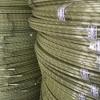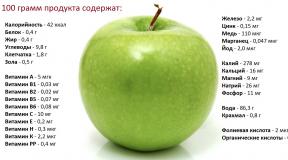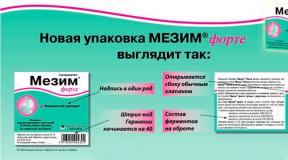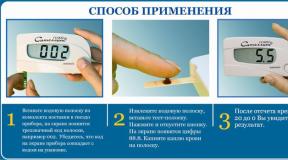Providing emergency care for foreign bodies. Signs of foreign bodies in the eyes. Foreign body in the trachea
Such an extremely unpleasant situation as getting into Airways(nasopharynx, larynx) of a foreign object occurs quite often. It is more likely to occur in children under 5 years of age. It is at this age that he actively learns the world around him, using not only his hands, but also his mouth. There is also the possibility that a small object can simply be inhaled by the child.
At an older age, the ingress of a foreign body into the respiratory tract occurs during games, jokes, eating too fast, and/or unsuccessful experiments. How to behave in such a situation, how to help the victim, and what first signs you should pay attention to, we will consider in this article.
Main symptoms
Depending on the size of the foreign object in the airways, it is able to completely or partially close them, blocking the access of oxygen to the lungs. In addition, a foreign body can injure the larynx, vocal cords, causing inflammation and swelling, thereby worsening the situation. With a partial variant, breathing will be heavy, difficult and intermittent. Sometimes a person can take a breath, but instead of exhaling there will be a creak or whistle. The most dangerous situation is when a foreign object completely blocks the breathing process, blocking the lumen of both bronchi at once. In this case, the risk of death is high.
How to understand that the cause of suffocation is precisely a foreign body, and not a strong allergic reaction, For example?
Signs of a foreign body in the airways
- Abrupt and sudden change in behavior. Movement becomes chaotic. A person, as a rule, grabs his throat and loses the ability to speak.
- Redness of the skin of the face, enlargement of the veins in the neck
- Cough as an attempt by the body to get rid of an object
- Breathing is difficult. When you inhale, you can hear strong wheezing
- Due to a sharp lack of oxygen, the skin above the upper lip may acquire a bluish tint.
- Rapid loss of consciousness
Such symptoms are characteristic of the active phase with complete blockage of the airways, if the object has stopped in the larynx or trachea. The disease develops rapidly, and assistance should be provided as quickly and efficiently as possible.
If a small object, with a sharp breath or cough, passed through the larynx and got stuck in the bronchi, then the first sharp external symptoms may be absent, or appear from time to time. In this case, there is a sluggish inflammatory process, which may be accompanied by: fever, short-term bouts of asphyxia, coughing fits, shortness of breath, vomiting. It is possible to determine the cause only with the help of x-rays.
It should be remembered that with improper assistance, you can move the foreign object inward, and thus only worsen the condition of the victim.
Foreign body in the airways and first aid
*** The Heimlich maneuver is a miraculous method developed by American doctor Henry Jude Heimlich in 1974. This is a method of assisting the victim, used to quickly free the person's respiratory tract from foreign objects or food debris. Reception is based on the creation of pressure in abdominal cavity the abdomen of the victim, which allows you to push the foreign body out of the oropharynx. In details this method explained in the presented video.
The article is for informational purposes, you perform all actions at your own peril and risk, remember that no one has canceled the qualified assistance of specialists!
Very useful video, watching it, you can save someone's life!
One of the most critical pathologies that anyone can encounter is a foreign body in the airways. Urgent care in these situations should appear instantly - in the first seconds. Certain maneuvers that everyone can master can save the life of an adult and a child if they are applied immediately.
 More often than not, this pathology develops in patients childhood. This is due to the peculiarities of the behavior of babies - while eating, they tend to play, talk, laugh or cry, cough. In addition, children very often take various small objects into their mouths, which they can then accidentally inhale. Anatomical features oral cavity and underdevelopment of protective reflexes in babies also contribute to an increase in cases of aspiration (inhalation) foreign bodies(IT) in small patients.
More often than not, this pathology develops in patients childhood. This is due to the peculiarities of the behavior of babies - while eating, they tend to play, talk, laugh or cry, cough. In addition, children very often take various small objects into their mouths, which they can then accidentally inhale. Anatomical features oral cavity and underdevelopment of protective reflexes in babies also contribute to an increase in cases of aspiration (inhalation) foreign bodies(IT) in small patients.
Adults most often suffer from this pathology when greedily absorbing food without chewing it, or when actively talking while eating. Another "aggravating circumstance" is alcohol intoxication, which reduces the activity of the nerve centers responsible for protective reflexes.
Symptoms of a foreign body in the airways
A feature of this pathology is that most often it occurs during meals. This - important information, which suggests that a person loses consciousness precisely due to a foreign body, and not, for example, a heart attack (although this is also possible).
The clinical picture of a foreign body goes through three stages in its development:
- initial stage, in which there is a sudden strong paroxysmal cough, lacrimation, redness of the face;
- development- the cough becomes stronger, there is practically no breathing, although the patient makes respiratory movements, cyanosis appears around the lips;
- final stage, during which breathing stops, the person loses consciousness, after a short time, cardiac arrest is observed, followed by clinical death.
How to recognize a foreign body in the airways by external signs
The moment when a foreign body enters the respiratory tract looks like this:
- suddenly the person stops talking, laughing, screaming or crying, grabs his throat with his hands;
- there is a strong cough, the victim stops answering questions;
- when the victim tries to inhale, either wheezing is heard, or nothing is heard; the victim opens his mouth wide, but cannot inhale;
- the face, initially reddening, quickly becomes pale, and then acquires a bluish color, especially in the region of the upper lip);
- within a few tens of seconds, there is a loss of consciousness due to respiratory arrest;
- in a very short time, the work of the heart stops and clinical death occurs.
First aid for foreign bodies in the respiratory tract
A person who knows how to recognize this pathology will not waste a second. The situation is developing rapidly and delaying first aid can cost the victim his life.
The algorithm of actions for this pathology is as follows:
- Address the victim with the question “What happened?” You may look stupid, but in reality this question is needed in order to understand whether a person is breathing at least somehow. Your further tactics will depend on this.
- If a person is somehow breathing, encourage him with the words “Cough, harder, more, come on” - any words that “break through” to his consciousness. Often this is enough for a small foreign body that has entered the upper respiratory tract to come out on its own.
- If spontaneous release of IT did not occur within 30 seconds, or if the person did not breathe from the very beginning, then the Heimlich maneuver should be applied.
Heimlich maneuver
The technique for doing it is as follows:
- Stand behind the victim.
- Grab his torso with both hands, cover your fist right hand with the palm of your left hand and make a knuckle thumb right hand five strong pressing on upper part belly. The direction is up and towards you. Restoration of breathing is a sign of removal of a foreign body from their airways.
Note: The Heimlich maneuver should be performed until the FB leaves the airway or until the person is unconscious. In the latter case, attempts to remove the foreign body should be stopped, and instead start.
Features of the Heimlich maneuver in children and pregnant women
When removing a foreign body in the respiratory tract in children under 1 year old, the rescuer should sit down, put the child on the left forearm face down, holding it with fingers folded into a “claw” lower jaw baby. The head of the child should be below the level of the body. After that, five medium-strength blows should be applied with the base of the palm to the interscapular region of the back. The second stage - the child turns face up on the right forearm, after the forehead, the rescuer makes five jerky movements along the sternum to a point located 1 finger below the inter-nipple line. Don't push too hard to break the ribs.
If a foreign body has appeared in the oropharynx, it is visible and can be removed without the danger of pushing it back - it is removed. If not, the whole cycle is repeated either until IT appears, or until cardiac arrest, after which cardiopulmonary resuscitation must be started.
In children aged 1-8 years, the Heimlich maneuver is performed by placing the child on the rescuer's thigh. The rest of the actions are performed according to the general rules.
You will receive more detailed information about emergency care for a child when a foreign body enters the respiratory tract by watching a video review by a pediatrician, Dr. Komarovsky:
An important question: “What if a pregnant woman was injured?” Indeed, pressing on the stomach of a woman who is at a long pregnancy is guaranteed to lead to serious complications. In this case, pressing is done not on the stomach, but on the lower part of the sternum, as in infants.Common Mistakes in Airway Foreign Body Removal
The first thing that comes to mind when a foreign body enters the respiratory tract is to knock on the back. The correct algorithm for how to knock is described above. However, most of us just pound on the back with all our might. The danger of this method is that gravity acts on any foreign body. Incorrect tapping may cause IT to penetrate lower into the tracheobronchial tree and may cause complete airway obstruction. First aid in this case is to carry out a tracheotomy, and even if by some miracle a qualified specialist turns out to be nearby, the chance of saving the victim will become scanty.
Never turn your baby upside down to shake him. Spasm of the larynx reduces your attempts to remove a foreign body to zero. Instead, you can dislocate the baby's cervical vertebrae. The fact is that when a child loses consciousness, the tone of the muscles of the neck drops, while shaking, his head begins to dangle in all directions, which can lead to dislocation of the cervical vertebrae and even their fracture. Saving a baby from death, you risk making him disabled or even killed.
In the respiratory tract (trachea, larynx, bronchi, nasal cavity, pharynx), most often by accident, sometimes food and small objects, which are called foreign bodies in medicine, get into. More often there are foreign objects in the larynx, as it is quite narrow and does not let them pass further. When any object enters the respiratory tract, a person begins to cough violently. If even with the help of coughing it is not possible to get rid of a piece of food or another object, you should contact a specialist who will correctly and immediately provide first aid.
Types of foreign bodies entering the respiratory tract
Depending on the shape and parameters, all alien objects are divided into 3 main groups. The first group includes bodies with a spherical shape: balls, tablets, capsules, soft pieces of food. These bodies are characterized by non-sharp edges and can penetrate into the trachea. Doctors remove such foreign objects, if possible, using the “Pinocchio effect” (it is necessary to turn upside down and hit with an open palm between the shoulder blades).
The second group includes bodies with a flat and wide surface, which are somewhat similar to coins. These items include buttons, coins, plates, body jewelry, rings, artificial nails, and others. Foreign bodies of the second group easily penetrate the glottis, but it is almost impossible to remove them in a natural way. Reduce a little pain If a coin enters the respiratory tract, a strong tapping of the palm between the shoulder blades can occur. This is done so that the foreign body changes its place of localization and the person can breathe.
The third group of foreign bodies includes objects whose shape resembles a rocker. The most dangerous objects that can disrupt a person's breathing and get into the larynx are pieces of meat with a strong film. Pork or lamb meat becomes a rubber stopper that prevents a person from inhaling and exhaling.
The only chance to extract a piece of meat from the respiratory tract is a strong blow made just below the diaphragm or an instant cricothyrotomy (conicotomy). Dissection of the larynx can only be carried out by a medical professional who is trained in the technique of the procedure and can actually save a person's life.
Symptoms when a foreign body enters the respiratory tract
The first symptom that appears when there is a foreign object in the respiratory tract is a strong cough to redness of the face, then vomiting, tears in the eyes and suffocation. If symptoms occur, it is recommended to exhale sharply so that the object blocking the larynx comes out under air pressure.
If a person cannot get rid of a foreign body, then along with a cough, stridor breathing appears with characteristic wheezing when inhaling. With each new breath, the object moves further, irritation of the mucous membrane of the trachea or larynx occurs. Due to the irritating factor, the airways begin to swell, mucus is abundantly secreted and accumulates. The most dangerous is the spasm of the glottis and swelling of the vocal folds.
When strangulated, the red color of the skin of the neck and face begins to change to blue, and the cough becomes more frequent. Then apathy and adynamia appear, the choking person loses consciousness. After losing consciousness of the patient, you need to monitor his pulse and send him to the hospital for medical care. If this is not done, a coma may occur.
 The onset of coma (blue asphyxia) is evidenced by:
The onset of coma (blue asphyxia) is evidenced by:
- lack of consciousness;
- blue skin of the neck, face, lips;
- an increase in blood vessels in the neck;
- vulture and retraction of the supraclavicular and subclavian cavities during inspiration;
- weak pulse on the carotid artery.
After blue strangulation, after 5-10 minutes pale asphyxia begins. Pale suffocation is accompanied by pallor of the skin, the reaction of the pupils to light disappears, and the pulse is not felt.
When foreign objects enter the respiratory tract, a person has several minutes before the onset of an attack and the appearance clinical symptoms therefore, the surrounding people must provide the correct first aid and take appropriate measures. The following two mistakes should not be made when saving a person: additionally examine the oral cavity (significant loss of time), try to remove food with a finger or other objects (part of the food or a foreign body can come off and enter the trachea, resulting in suffocation).
"Pinocchio effect" when a foreign body enters
When removing spherical bodies, you should use the "Pinocchio effect". If the baby chokes on, for example, peas, you need to turn it over so that the head is down, then hit the palm between the shoulder blades 3-4 times. In case the food did not fall on the floor, you need to proceed to other methods. The basic technique is the “Pinocchio effect”: we turn over the choking one on the stomach, then we throw it over our thigh or the back of the chair, and only then we hit the palm of our hand several times between two shoulder blades. This method is used to extract foreign bodies from children, adolescents and adult men and women.
You can save the injured baby using this technique: we put the baby on our own forearm, we introduce it into oral cavity 2 fingers (if there is a piece of paper from a candy or a bag in the mouth, it should be carefully removed), then lightly beat the baby on the back until a foreign object falls out (strong blows can injure spinal cord and lead to disability, so their strength must be monitored). It is forbidden to shake or hold the legs upside down, as children have a very weak spine.
If after 15-30 seconds the food does not fall out of the throat, you need to change tactics. If the foreign object looks like a coin or plate, this technique will not be effective. Doctors recommend that if the method is ineffective, use the "American police method" (see below).
Emergency care in case of inhalation of coin-shaped bodies
When hit by objects that look like a coin, it is advisable to use a technique called the “piggy bank effect”. If a person swallowed a coin, you need to force the alien object to change its location. In case of strong impacts in the area chest, there is a possibility that the foreign object will turn the other way and free the air passage or move to the bronchi (when the coin or button is in one bronchus, the victim will be able to breathe and have time to get to the ambulance).
The most common way to shake the chest is to tap on the back with the palm of your hand. The “method of American policemen” is also considered an effective procedure. Technique: you should stand behind the victim and take him by the shoulders, then move him away from you to outstretched arms and only then sharply hit him with his back against his own chest. This manipulation can be carried out 3-4 times. The technique is effective if the rescuer has a flat male chest.
Features of the "Heimlich method"
 The "Heimlich method" is effective in removing foreign particles from the upper respiratory tract. The technique is considered one of the most risky and should be carried out exclusively by medical professionals. During a sharp blow just below the diaphragm, from 250 to 300 ml of air is pushed out of the lungs, and a foreign body flies out with the air. The risk is that with a sharp blow, reflex cardiac arrest, injury internal organs, bleeding.
The "Heimlich method" is effective in removing foreign particles from the upper respiratory tract. The technique is considered one of the most risky and should be carried out exclusively by medical professionals. During a sharp blow just below the diaphragm, from 250 to 300 ml of air is pushed out of the lungs, and a foreign body flies out with the air. The risk is that with a sharp blow, reflex cardiac arrest, injury internal organs, bleeding.
The "Heimlich method" is forbidden for babies who are not yet 3 years old. Even if the food came out with air, the victim should be taken to the hospital in an ambulance, because after such a radical method of removing a foreign body, internal organs and systems can be damaged. It is forbidden to learn this technique from each other, for this there are specialized courses and conferences.
Features of the implementation of the "Heimlich method": you need to stand behind a choking person and wrap your arms around him, folded into a castle. In this case, the lock should be between the lower ribs and the navel. Next, the rescuer must remove the victim from himself and with all his strength hit him with his back against his chest, and press the epigastric region with folded brushes.
Cricothyrotomy
Only medical professionals are authorized to perform a cricothyrotomy, as this is a serious procedure that needs to be trained and mastered. During the manipulation, an incision is made between the cricoid and thyroid cartilages (the hole will be above the trachea and the victim will be able to breathe freely).
Surrounding people can help to carry out emergency manipulation, for this it is necessary: to fix the head of the choking person (it is advisable to hold it between both knees so that the medical worker makes an accurate cut), press the victim’s hands to the floor or ground, ask people for an object in the form of a tube (it will help let air in and out of the lungs).
Rules to help avoid getting a foreign body into the respiratory tract
To prevent food and other objects from getting into the trachea and larynx, you need to follow a few simple rules. First, you can’t eat on the street, because something can frighten a person and a piece of food will get into the respiratory tract. Secondly, you should not talk during the meal, because not only soft food, but also bones from meat or fish can end up in the throat. Thirdly, you should not keep metal objects and other foreign bodies between your teeth, which can inadvertently get into the trachea or larynx. Fourth, if a child holds a small toy near his face or licks it, you must immediately pick it up, since the actions of the baby are often unpredictable (it is advisable to give the child a soft large toy so that he does not get upset and start crying).
Serious mistakes when removing a foreign object
With incorrect (too strong and intense) blows to the back, a foreign particle can move forward and end up in the tracheobronchial tree, thereby blocking the airways. If a foreign object has entered the tracheobronchial tree, a tracheotomy should be performed immediately.
It is forbidden to turn the child upside down and shake, because the baby's body is still too weak and may not withstand such a load (there is a risk of dislocation and even fracture of the cervical vertebrae). The most serious mistake during a rescue operation is panic. The surrounding people and medical workers are no less afraid than the victim himself, so you need to gather your will into a fist and act according to the technique of extracting a foreign particle from the respiratory tract.
There are many techniques and methods that will help remove a foreign object from the larynx and other internal organs, but there are also ways of first self-help. Doctors recommend that when a foreign particle enters the respiratory tract, exhale sharply, throwing straight arms forward. Along with these movements, you need to quickly lean forward. If this event does not help and the actions of the surrounding people are not effective, you need to take the choking person to the hospital for surgical intervention.
The problem of foreign bodies entering the respiratory tract is very relevant, because it occurs at any age, it requires an urgent and sometimes emergency assessment of the situation, examination and making the right decision.
According to clinical data, among all cases of foreign bodies of the airways, foreign bodies of the larynx occur in 12%, foreign bodies of the trachea - in 18%, foreign bodies of the bronchus - in 70% of cases. Foreign bodies of the airways are especially common in childhood. The foreign bodies of the bronchi in children account for 36%; at the same time, in a third of observations, the age of children is from 2 to 4 years. In 70% of cases, foreign bodies enter the right bronchus, since it is wider and straighter.
Causes of a foreign body entering the respiratory tract
At times more often this pathology develops in patients of childhood. This is due to the peculiarities of the behavior of babies - while eating, they tend to play, talk, laugh or cry, cough. In addition, children very often take various small objects into their mouths, which they can then accidentally inhale. The anatomical features of the oral cavity and the underdevelopment of protective reflexes in children also contribute to an increase in cases of aspiration (inhalation) of foreign bodies in young patients.
Adults most often suffer from this pathology when greedily absorbing food without chewing it, or when actively talking while eating. The prerequisite for aspiration of foreign bodies in neurological disorders, accompanied by a decrease in protective reflexes from the oral cavity, pharynx and larynx, and swallowing disorders (bulbar palsy, myasthenia gravis, brain injury, stroke) becomes very real. In a similar situation are persons in a state of severe intoxication. The cause of foreign bodies entering the respiratory tract can be medical manipulations in the oral cavity, incl. performed under local conduction anesthesia.
Classification of foreign bodies in the respiratory tract:
1. endogenous (non-extracted pieces of tissue during tonsillectomy and adenotomy, extracted teeth, roundworms);
2. exogenous:
Organic (pieces of food, seeds and grains of plants, nuts, etc.),
Inorganic (coins, paper clips, nails, beads, buttons, toy parts, etc.).
The greatest aggressiveness and difficulty in diagnosis are objects of organic origin, synthetic materials and tissues. They do not contrast on X-ray, increase in size due to swelling, crumble, decompose; penetrate into distal departments bronchial tree, causing chronic suppuration of the lungs.
The severity of disorders caused by a foreign body that has entered the lumen of the respiratory tract depends on such circumstances:
- properties of a foreign body (its size, structure, structural features);
- the depth of its penetration, the presence or absence of fixation in the lumen of the respiratory tract;
- the degree of violations caused for the passage of air, gas exchange.
The moment when a foreign body enters the respiratory tract looks like this:
Suddenly, the person stops talking, laughing, screaming or crying, clutching his throat with his hands;
There is a strong cough, the victim stops answering questions;
When the victim tries to inhale, either wheezing is heard, or nothing is heard; the victim opens his mouth wide, but cannot inhale;
The face, initially flushed, quickly becomes pale, and then becomes bluish, especially in the region of the upper lip;
Within a few tens of seconds, there is a loss of consciousness due to respiratory arrest;
In a very short time, the work of the heart stops and clinical death occurs.
Clinical picture when a foreign body enters the respiratory tract
Foreign bodies of the larynx: acute onset, inspiratory dyspnea, severe stridor breathing, cyanosis, paroxysmal whooping cough. With foreign bodies that have sharp edges or edges, hemoptysis often occurs.
Foreign bodies of the trachea: acute onset with prolonged barking cough, turning into vomiting; stridor breathing; sometimes dull pain behind the breastbone; a symptom of clapping, which occurs due to a sharp displacement of a foreign body, is characteristic.
Foreign bodies of the bronchi:
1. The period of acute respiratory disorders (passage of a foreign body through the upper respiratory tract). Usually short lived. Acute attack of cough, cyanosis, suffocation.
2. The period of latent flow (fixation of a foreign body in the peripheral bronchus). Duration - from several hours to 10 days.
3. Period of complications:
a) early complications: bleeding, atelectasis, acute pneumonia, bacterial destruction of the lungs, progressive mediastinal emphysema, pyopneumothorax, peritonitis;
b) late complications: bronchoconstriction, bronchiectasis.

First aid in case of foreign body inhalation
Foreign bodies in the larynx that make breathing difficult require immediate removal. There are special techniques for removing foreign bodies.
1. If the victim is conscious, it is necessary to stand behind him and ask him to tilt his body forward at an angle of 30-45 °, with the palm of his hand, not hard, but sharply hit him between the shoulder blades 2-3 times.
2. If this does not help, you need to use more effective methods. If the victim is in vertical position The person assisting comes up to him from behind, wraps both hands around the upper abdomen and sharply squeezes the abdomen and lower ribs in order to create a powerful reverse movement of air from the lungs, which pushes the foreign body out of the larynx. It should be remembered that immediately after the foreign body leaves the larynx, a deep breath will reflexively follow, during which the foreign body, if it remains in the mouth, can again enter the larynx. Therefore, the foreign body must be immediately removed from the mouth.
3. If the victim is in horizontal position, then to extract the foreign body, the victim is placed on his back and with two fists they sharply press on the upper abdomen towards the lungs, which provides the mechanism already described.
4. If the victim is unconscious, he should be laid on his stomach on a bent knee, head down as low as possible. Hit 2-3 times with the palm between the shoulder blades sharply enough, but not very hard. If there is no effect, the manipulation is repeated.
5. After successful recovery breathing for the victim, medical supervision is required, since the methods used can lead to damage to internal organs.
In cases where there is no danger of suffocation, self-removal of foreign bodies should not be resorted to, as this should be done by a specialist. Currently, foreign bodies in the upper respiratory tract are removed using a bronchoscope - a special tool that allows you to examine the airways, detect a foreign body and remove it.

Features of the Heimlich maneuver in children
When extracting a foreign body in the respiratory tract in children under 1 year old, the rescuer should sit down, put the child on the left forearm face down, holding the lower jaw of the baby with fingers folded into a “claw”. The head of the child should be below the level of the body. After that, five medium-strength blows should be applied with the base of the palm to the interscapular region of the back. The second stage - the child turns face up on the right forearm, after the forehead, the rescuer makes five jerky movements along the sternum to a point located 1 finger below the inter-nipple line. Don't push too hard to break the ribs.
If a foreign body has appeared in the oropharynx, it is visible and can be removed without the danger of pushing it back - it is removed. If not, the entire cycle is repeated either until a foreign body appears, or until cardiac activity stops, after which cardiopulmonary resuscitation must begin.
In children aged 1-8 years, the Heimlich maneuver is performed by placing the child on the rescuer's thigh. The rest of the actions are performed according to the general rules.

Diagnosis when a foreign body enters the respiratory tract
X-ray of the throat or plain radiography chest - detection of radiopaque foreign bodies, as well as atelectasis, emphysema.
Direct laryngoscopy, tracheoscopy, bronchoscopy are of decisive importance in identifying foreign bodies in the relevant parts of the respiratory tract.
Prevention of foreign body entry into the respiratory tract:
Do not keep small objects (needles, nails, pins) in your mouth;
Control by adults over the quality of toys and their compliance with the age of the child; weaning children from the habit of taking foreign objects into their mouths;
Do not talk while eating;
Exercise caution when performing medical procedures.
Success in providing assistance to the victim directly depends on the competent actions of the person providing assistance. The time factor is decisive here. The sooner help is started, the higher the likelihood of resuscitation of the victim. The most common mistake is panic. This feeling paralyzes both the mind and the body and does not allow to act correctly. Panic can be avoided if you practice on dolls or friends in advance. Then, in a critical situation, your brain will choose the optimal algorithm of actions, and your hands will perform all the necessary manipulations without an admixture of emotions. And this is what makes common man rescuer.
Foreign bodies of the eye can be very diverse: specks, small insects, fragments of metals, glass, etc.
Symptoms: pain, pain in the eye, aggravated by blinking; lacrimation, photophobia.
First aid
1. In good light, carefully examine the eye, pull back the lower eyelid and find the location of the foreign body.
2. Remove the visible free-lying foreign body with a sterile gauze pad.
3. In order to prevent infection, instill 2-3 drops of a 30% solution of sodium sulfacyl (albucid) into the eye.
NOTE: If sharp objects or fixed foreign bodies get into the eyes, it is necessary to apply a binocular bandage and urgently contact an ophthalmologist.
Foreign bodies of the ear There are two types: non-living and living. non-living foreign bodies- small items (fruit seeds, legume seeds, buttons). Living foreign bodies- these are insects (cockroaches, midges).
Symptoms: discomfort, itching in the ear; when it gets into the ear of an insect - a burning sensation, cod, pain.
First aid
1. It is forbidden to extract non-living foreign bodies on your own, since further pushing deep into the ear canal is possible.
2. If it gets into the ear of an insect:
- fill the ear canal with warm vegetable oil(8-10 drops);
Offer the victim to lie down on the healthy side for several minutes (the insect dies and the pain caused by its movement stops);
After the disappearance of discomfort in the ear, it is necessary to lie down on the other side, often the foreign body is removed along with the liquid.
3. If a foreign body remains in the ear, you should contact an otolaryngologist.
NOTE: do not try to remove a foreign body with matches, hairpins, as this can lead to injury to the eardrum.
Foreign bodies of the nose often occur in children who themselves push small objects into their noses (balls, beads, buttons). Insects that crawl during sleep or fall on the fly get into the nose much less often.
Symptoms: discomfort in the nasal cavity, causing reflex sneezing; in case of contact with objects with sharp edges that injure the mucous membrane - discharge with an admixture of blood, swelling of the nasal mucosa and difficulty in nasal breathing are possible.
First aid
1. Invite the child to inhale through the mouth, and exhale strongly through that half of the nose where the foreign body is supposed to be (close the second half of the nose).
2. Grab a well-visible flat foreign body in the anterior parts of the nose with tweezers and remove. A foreign body that has a bean-shaped or spherical shape is contraindicated because of the danger of moving it into the respiratory tract.
NOTE: if a foreign body is not removed, it is necessary to contact an otolaryngologist.
Foreign bodies of the oropharynx - these are various objects (fish bones, nails, wire) stuck into the mucous membrane of the oropharynx.
Symptoms: feeling of a foreign body in the throat; stabbing pain when swallowing; increased salivation; possibly vomiting.
First aid
1. Grasp a well-visible foreign body with tweezers and remove.
2. Suggest rinsing with a solution of furatsilina.
NOTE: with an invisible foreign body in the oropharynx, contact an otolaryngologist.
Foreign bodies entering the respiratory tract can lead to their blockage and asphyxia. Often food gets into the larynx, trachea when the child talks or laughs while eating. Often, small objects enter the respiratory tract of children during the game by pushing them into the nasal or oral cavity and then taking a deep breath.
Symptoms: the child usually cries; paroxysmal severe cough, noisy breathing; cyanosis (cyanosis) of the skin of the face, neck; possibly respiratory arrest.
First aid
1. In the absence of breathing, tilt the victim forward and hit the interscapular region several times with your hand or make jerky pressure on the epigastric region.
2. In the absence of breathing in a small child, lift him by the legs, shake, pat on the back, squeeze the chest in a jerky manner.
3. Urgently call an ambulance medical care and immediately transport to a medical facility.



















